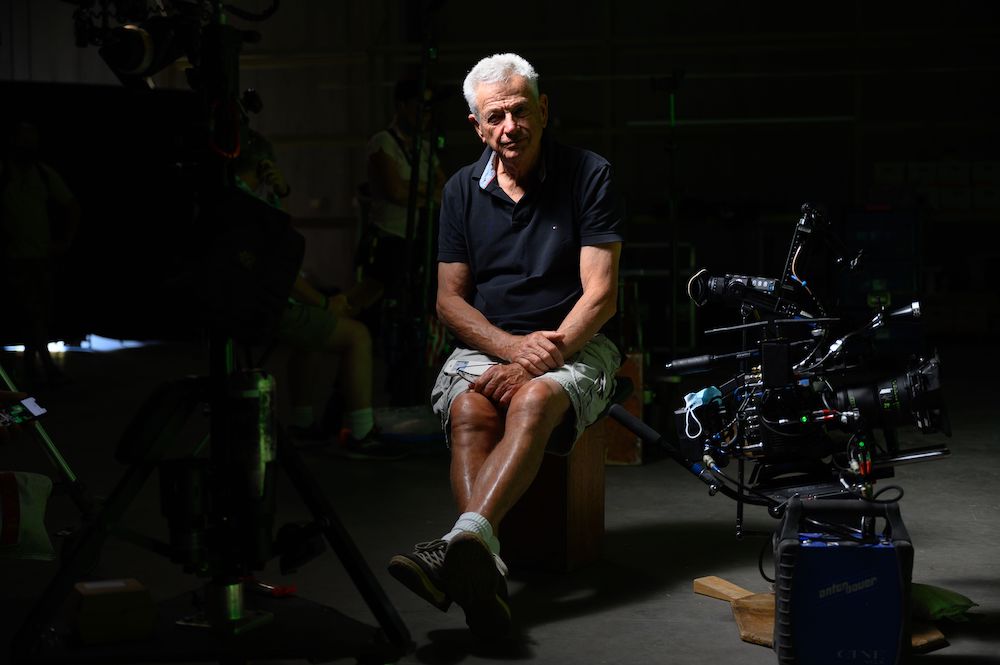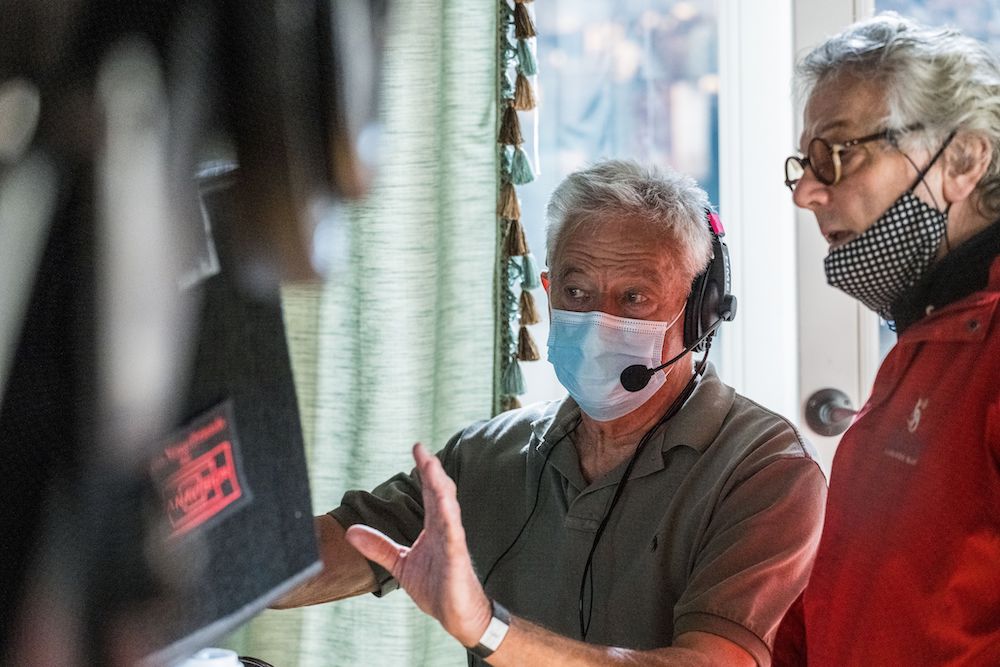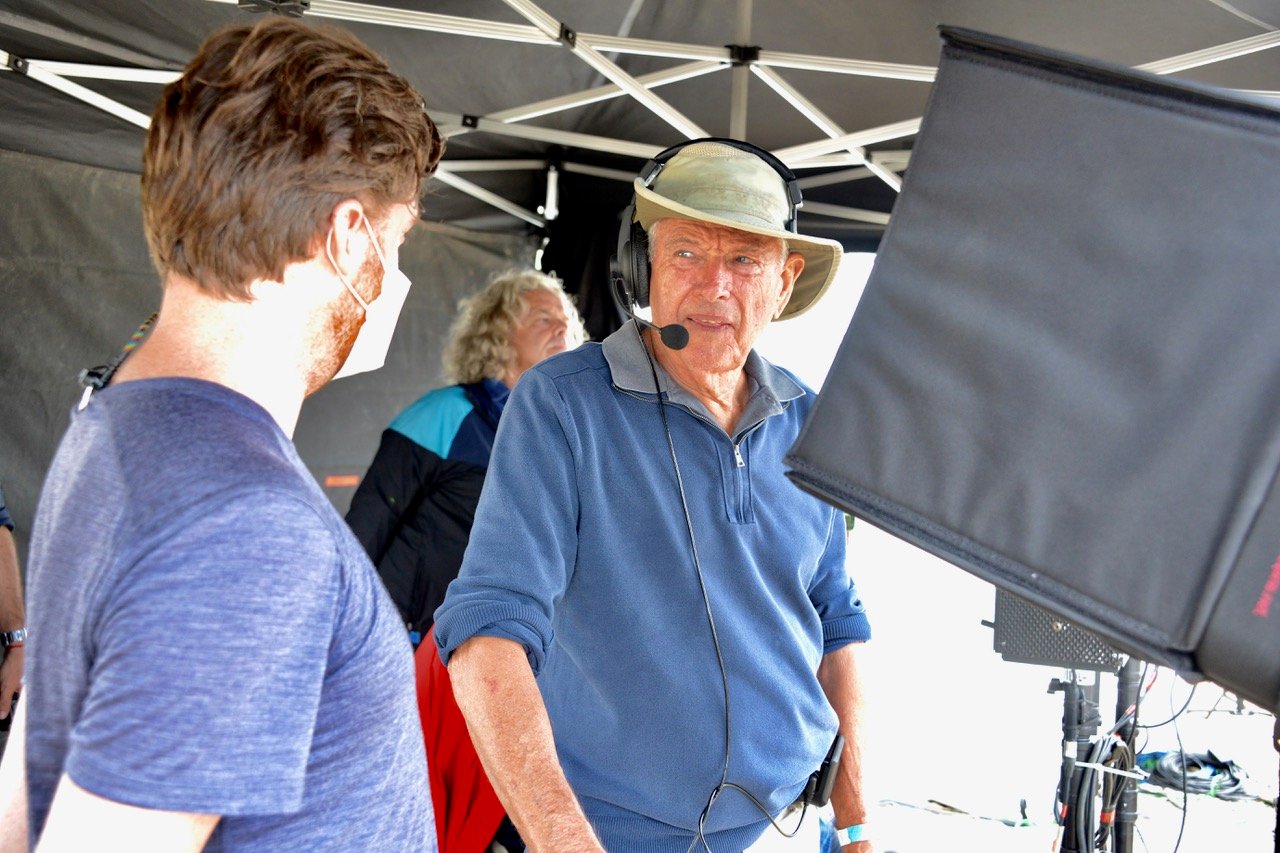Storied Australian cinematographer John Seale remembers the first time he met George Miller. The “Beyond Rangoon” cameraman, who had been a camera operator for Peter Weir on his films “Picnic at Hanging Rock” and “The Last Wave”, was being considered for the role of DP on Miller’s second “Mad Max”, “The road warrior”.
Though they didn’t work together on that project, as Miller chose Dean Semler to shoot the film, the two Aussies remained in contact.
In the years following, Seale had become one of the most in-demand cinematographers in the world, shooting acclaimed films including Weir’s “Witness” (1985) starring Harrison Ford, which received 5 Oscar nominations, “The Mosquito Coast” (1985), another with Ford, “Dead Poets Society”, and “Rain Man”.
His first Hollywood film, “Witness”, for which he was Oscar-nominated, was both an exciting and “terrifying” experience.
“We’d been in Australia and we had our own little systems and confidences and things like that. But then, suddenly, you end up with Harrison Ford in front of your lens, and he was number one box office in America.”, Seale reflects.
Off the back of his success, Seale was approached by Miller to shoot his 1989 film, “Lorenzo’s Oil”, starring Nick Nolte and Susan Sarandon, which would be nominated for two Oscars.
Nearly 25 years after they first worked together, in 2012, the professional relationship and close friendship between Miller and Seale was solidified when he received a call to do the fourth “Mad Max” with Miller.
Love Film & TV?
Get your daily dose of everything happening in music, film and TV in Australia and abroad.
“Fury Road”, Seale’s first feature in five years, was a massive success globally, earning an Oscar nomination for the cinematographer, and a total of ten nominations for the production.
During its release, Seale was approached by Miller to shoot his next, which he was trying to get up at the time, “Three Thousand Years of Longing”.
The “Perfect Storm” cinematographer, who was then considering retirement, was happy to come on board.
“George was a little bit pestered about when he was gonna do the next ‘Mad Max’ after that. And he said, ‘No, I’ve got a little ensemble piece that I’m thinking about that I’d really love to do. And I was sort of fired up and wired with the whole biz’ again. So I said, ‘Look, ‘If you think I can help, gimme a ring’. So, it sort of became a done deal that I would do “Three Thousand Years of Longing”, Seale remembers.
-“I did think that George would ring within two years, but it was seven years later he rang (laughs). So, really, it’s been almost 17 years, before he got this one going.” “So, that extended my working life a little”, he adds.
Seale says part of what enticed him to do the film, which would be his final feature, was the opportunity to work on a smaller film, and to re-team with Miller.
“The big ones like “Fury Road” and “Perfect Storm” and all those really big visual pictures, there’s a lot of people on those and mayhem every day going on. To work with two actors like this with your camera and just watching them through the lens strutting their stuff was lovely.”
Initially, production was to happen in Istanbul and London, a plan that was nixed by COVID travel restrictions. Seale says the production team came up with a novel solution – they would turn Sydney into Istanbul using digital post tools.
“We did the surveys in London and Istanbul, which were the two main locations, but of course COVID tended to stop that, we weren’t going to travel. So all of that was found or built in Sydney, and quite honestly, with the computer post work that you can do now, you really don’t have to go anywhere else in the world.”
He says the experience of making the film – despite numerous challenges presented by the pandemic, was one of the smoothest and most enjoyable he has had in his career.
“We had what we called the COVID police and they made sure there were only a certain number of people in that area, giving everybody a bit of space, we all wore masks. We were tested every day, things like that changed the routine. But the overall feeling working with George and those actors was so lovely and compatible for everybody, that it made it an extremely enjoyable film to work on. We just cruised along and made the movie.”

In a career that has seen him work alongside the biggest actors in the world, from Dustin Hoffman and Tom Cruise, to George Clooney and Mark Wahlberg, Seale says working with Swinton and Elba was a delight.
“Tilda and Idris were just so lovely to work with and they just loved doing it. If George asked for another take, say, take six, they didn’t worry about that. Whereas I’ve seen actors complain about doing take two.”
Reflecting on his illustrious career, which has seen him receive 5 Oscar nominations, Seale says he has many fond memories.
One of his proudest moments was making “Rain Man” with Dustin Hoffman and Tom Cruise, which was a life changing experience for the DP.
” Tom was amazing. Dustin was such a hoot to work with. It was a real what-if system of filmmaking. ‘Hey, what if we do..’ so, I loved it for that. We just rocked along.”, Seale remembers.
“It was a road movie, we traveled right across America. So I was seeing America, I was shooting a lovely movie with lovely actors and I was being paid and the movie was in colour. What more could you ask?”, he adds.
At that time, he was often fielding calls from the biggest stars, themselves, to shoot their films, which became an issue due to Seale being “snapped up” and unavailable to meet demand.
Seale keenly recalls making the iconic film “Dead Poets Society” with Weir, which would receive four Oscar nominations, and become a global sensation.
“That film was extraordinary. Robin Williams, gosh, he was the greatest. I think if I remember correctly, we averaged 20 setups a day with one camera on quite a major American film. And they just couldn’t believe that we did that.”
“We pushed the American crew along very fast to get all of that, but the boys were so lovely.”

Seale particularly remembers working with a young Ethan Hawke on the film. The cameraman recalls thinking then, that he would go on to bigger things.
“He was very fierce, because he was the one who was going to change the whole thing. During the film, he was the one who was so mortified at the death of the other young man in his class, he was the one who had to make the decision. And you could tell that he was gonna go on to be a great actor because of the amount of work he’d done.”
Another favourite career highlight – shooting “The English Patient” with director Anthony Minghella and actors Ralph Fiennes and Juliette Binoche.
“‘The English Patient” was, again, (like “Rain Man”), we’re in this desert, put the actors in, let’s just shoot it. So, it again was a reality driven photography that just kept the audience and the actors within the confines of that locations. So, it was a joy to shoot, because the photography was reality. “
Looking back on those manifold achievements, Seale says he has gratitude for the experiences he has had, and couldn’t be prouder to go out on Miller’s “Three Thousand Years”.
“I really think that the visuals George wanted out of it were very exciting to be part of. So, I’m really happy with that, and I’m really, really happy that this is my Swan song in a way.”































